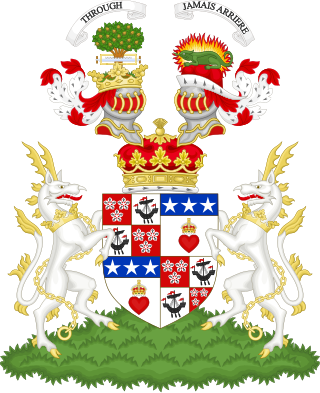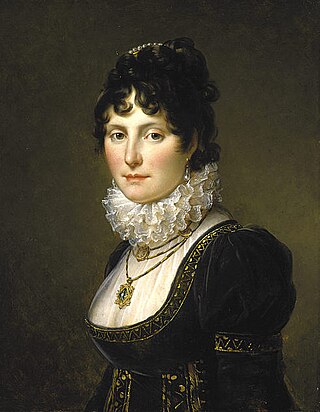Related Research Articles

Duke of Hamilton is a title in the Peerage of Scotland, created in April 1643. It is the senior dukedom in that peerage, and as such its holder is the premier peer of Scotland, as well as being head of both the House of Hamilton and the House of Douglas. The title, the town of Hamilton in Lanarkshire, and many places around the world are named after members of the Hamilton family. The ducal family's surname, originally "Hamilton", is now "Douglas-Hamilton". Since 1711, the dukedom has been held together with the Dukedom of Brandon in the Peerage of Great Britain, and the dukes since that time have been styled Duke of Hamilton and Brandon, along with several other subsidiary titles.

William Hamilton, 2nd Duke of Hamilton KG was a Scottish nobleman who supported both Royalist and Presbyterian causes during the Wars of the Three Kingdoms.

William Douglas-Hamilton, Duke of Hamilton, KG, PC, also known as Lord William Douglas and the Earl of Selkirk, was a Scottish nobleman and politician. He was the eldest son of the 1st Marquess of Douglas by his second wife, Lady Mary Gordon, a daughter of the 1st Marquess of Huntly.

David Carnegie, 3rd Earl of Northesk was a Scottish aristocrat and landowner.

Cynthia Ellinor Beatrix Spencer, Countess Spencer was a British peeress and the paternal grandmother of Diana, Princess of Wales.
William Cochrane of Kilmaronock, Dunbarton was a Scottish politician who sat in the Parliament of Scotland between 1689 and 1707 and as a Tory in the House of Commons from 1708 to 1713.
John Butler, Earl of Gowran (1643–1677) was an MP in the Irish Parliament 1661–1666 before being created Earl of Gowran in 1676. He married but died childless.
James Stuart, 4th Earl of Moray was a Scottish nobleman and landowner.
William Douglas, 1st Marquess of Douglas and 11th Earl of Angus (1589–1660) was a Scottish nobleman.

Louisa Jane Hamilton, Duchess of Abercorn was a member of the British aristocracy. She was the half-sister of Prime Minister John Russell, 1st Earl Russell.
Arthur Annesley, 1st Earl of Mountnorris FRS was an Irish peer.
Charles Edward Rawdon-Hastings, 11th Earl of Loudoun was a Scottish peer.
Robert Boyd, 7th Lord Boyd, was a Scottish noble.

Mary Hamilton Bruce, Countess of Elgin was the first wife of British diplomat Thomas Bruce, 7th Earl of Elgin during his term as Ambassador Extraordinaire to the Ottoman Empire and one of the most influential and wealthiest heiresses of the late 18th and early 19th century.

John Lindsay, 17th Earl of Crawford, 1st Earl of Lindsay was a Scottish nobleman.
Sir Alexander Bannerman, 9th Baronet was a Scottish diplomat.
John Cochrane, 4th Earl of Dundonald, was a Scottish aristocrat and politician.
Hugh Dalrymple-Murray-Kynnynmond, was a Scottish landowner, lawyer and journalist.
John Lindsay, 8th Lord Lindsay PC, was a Scottish landowner.
Robert Lindsay, 9th Lord Lindsay PC, was a Scottish landowner.
References
- ↑ Burke, John (1832). A General and Heraldic Dictionary of the Peerage and Baronetage of the British Empire, Vol. 1. H. Colburn and R. Bentley. p. 564. Retrieved 3 April 2015.
- ↑ Burke, Bernard (1866). A Genealogical History of the Dormant: Abeyant, Forfeited, and Extinct Peerages of the British Empire. Harrison. p. 363.
- ↑ "Maxwell Heraldry".